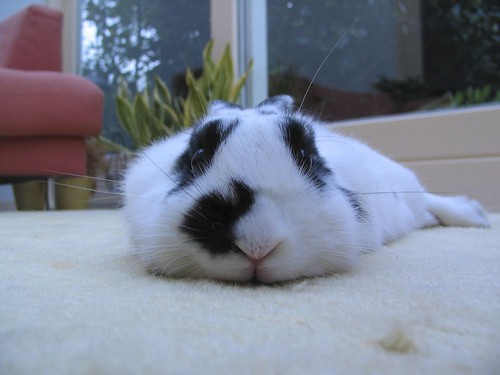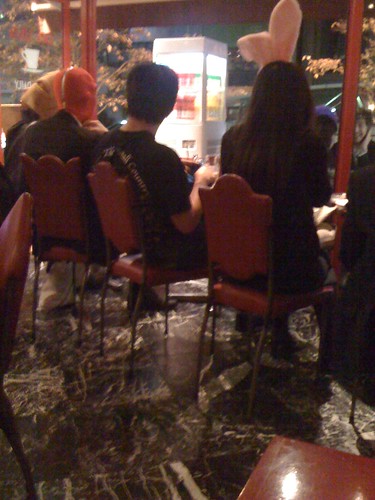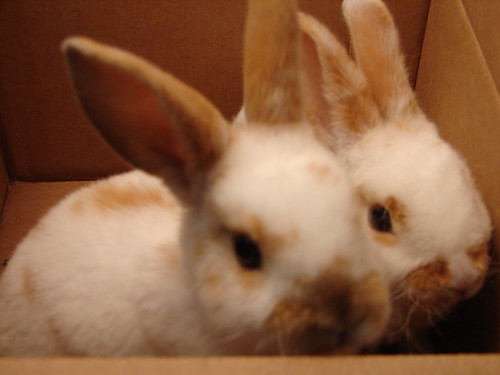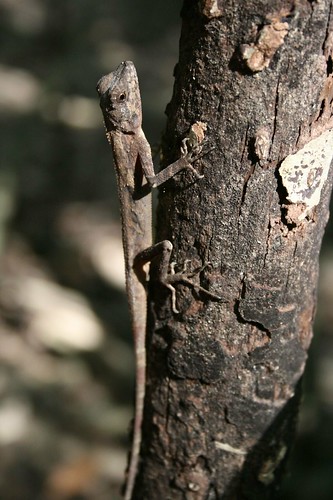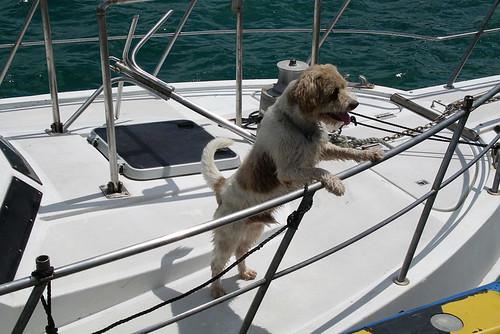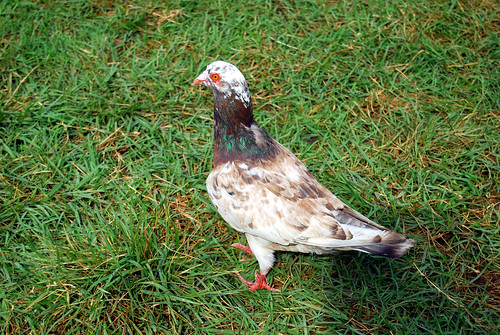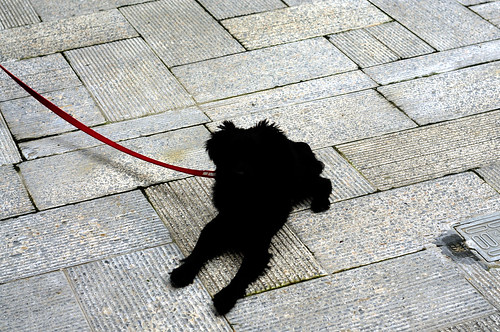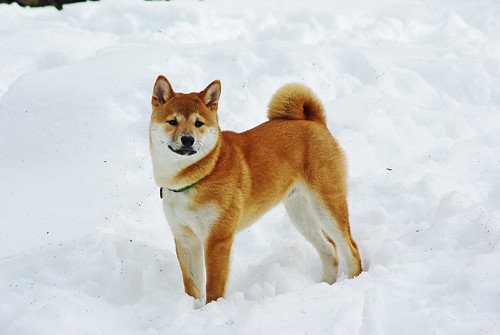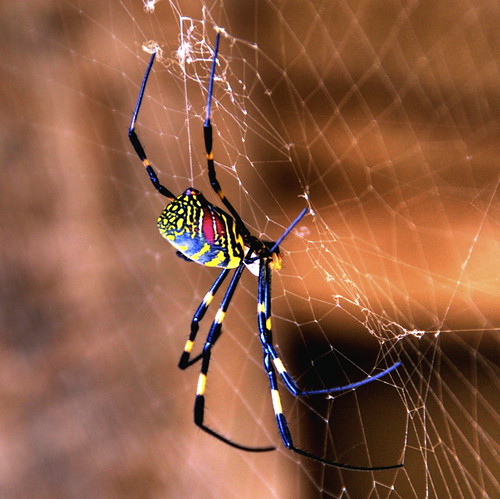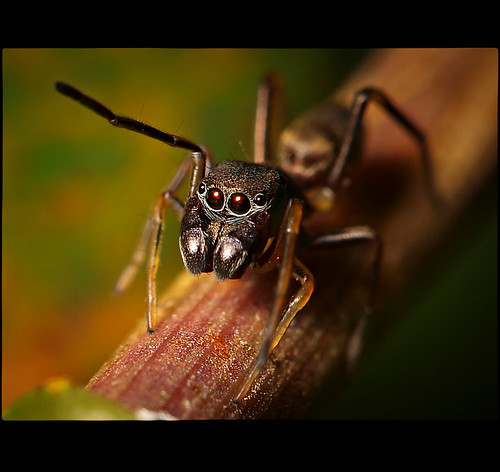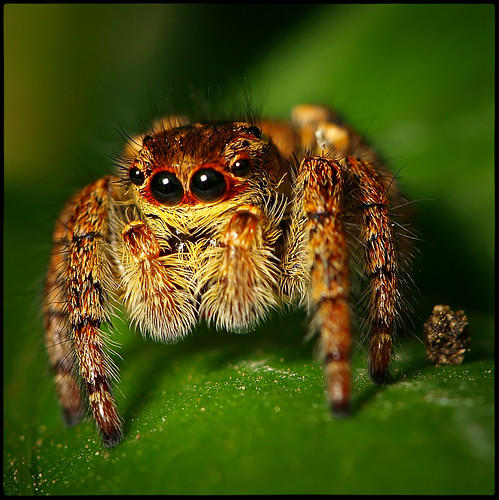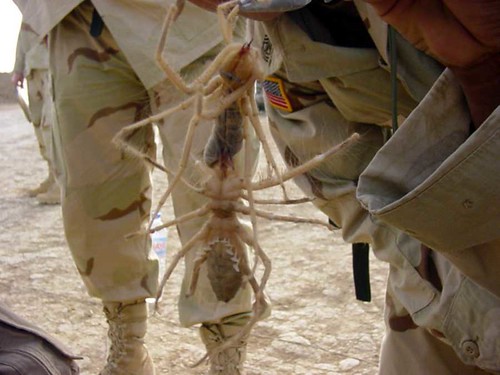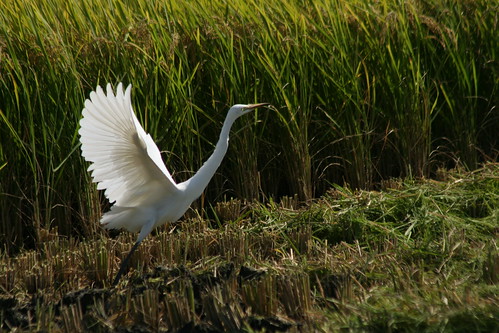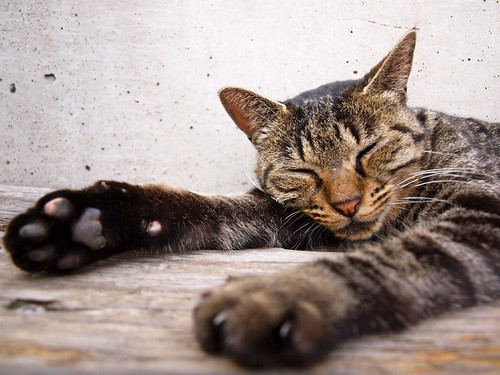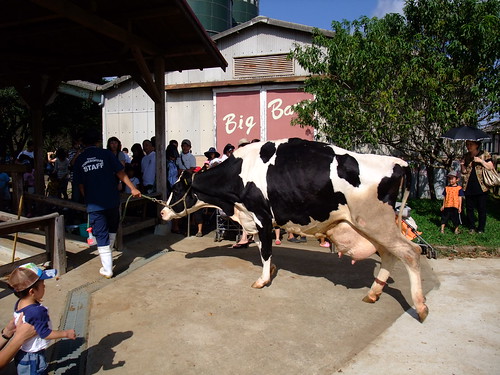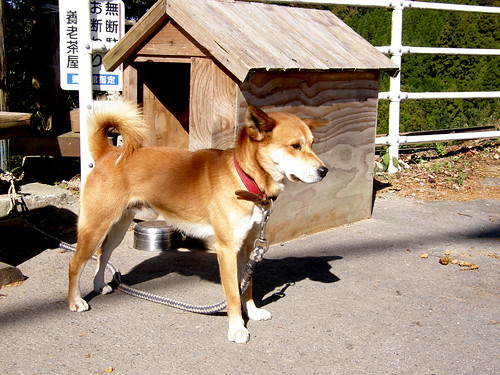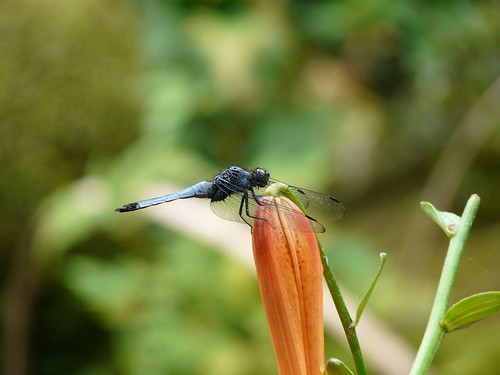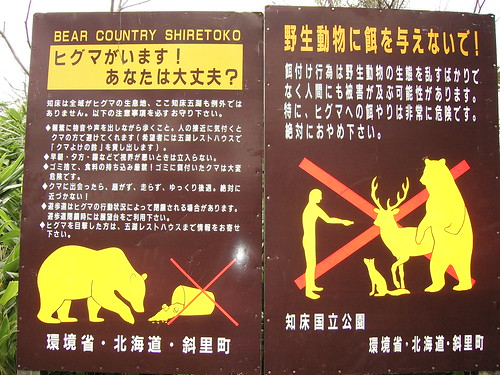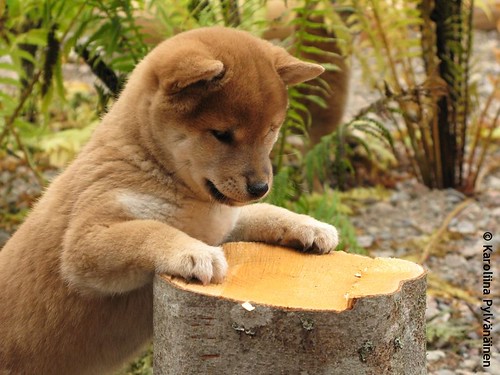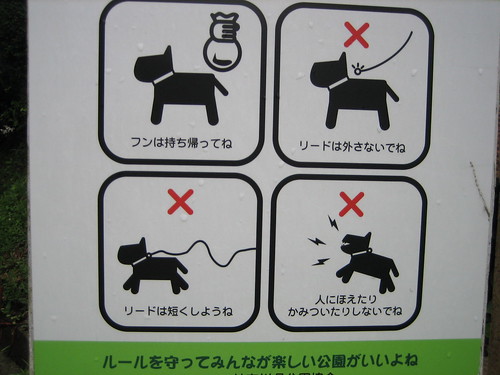This is one of the longest running blogs on the topic of Japan. The blog is about things occurring in Japan. All topics are fair game. I have been deep in the Japanese global community for 20 years, so ask questions if you have any. The blog started out focusing on the many unusual and literally ancient animals in Japan. Over time people wanted to know, see, and read more, so I expanded the blog.
Saturday
Friday
Monday
Friday
Japan Town Tests Dolphin Eaters for Mercury Levels, Times Says
By Anna Kitanaka
Oct. 15 (Bloomberg) -- Taiji, a town in western Japan known for its annual dolphin hunts, will test residents for mercury poisoning from eating the mammal’s meat, the Japan Times said.
Residents who had regular health checks between June and August were asked to have a sample of hair tested for methylmercury, the newspaper said, citing an unidentified city official. The results are expected by March, the report said.
The Taiji Fisheries Cooperative hasn’t killed any dolphins for food this hunting season, catching the animals only for sale to aquariums, the report said.
The hunt, which began last month and runs through February in the town 130 kilometers (81 miles) south of Osaka, received worldwide attention with the release this summer of “The Cove,” a documentary by U.S. filmmakers that shows the dolphin cull through footage shot with hidden cameras.
Dolphin hunting for food in Japan dates back as long as 9,000 years and the town’s hunt is legal under international and domestic law, according to a Web site operated by Taiji’s fishing association.
According to Japan’s Fisheries Agency, 1,623 dolphins were killed in 2007 in Wakayama, the prefecture where Taiji is located, the second-highest number after Iwate in northern Japan. Eight of Japan’s 47 prefectures are permitted to hunt dolphins, with the number killed targeted at around 20,000 annually, according to the agency.
Broome, Taiji’s sister-city town in western Australia, this week reversed a decision to cut its relationship with Taiji after expressing concern about the dolphin hunt, according to a separate Japan Times article today.
Oct. 15 (Bloomberg) -- Taiji, a town in western Japan known for its annual dolphin hunts, will test residents for mercury poisoning from eating the mammal’s meat, the Japan Times said.
Residents who had regular health checks between June and August were asked to have a sample of hair tested for methylmercury, the newspaper said, citing an unidentified city official. The results are expected by March, the report said.
The Taiji Fisheries Cooperative hasn’t killed any dolphins for food this hunting season, catching the animals only for sale to aquariums, the report said.
The hunt, which began last month and runs through February in the town 130 kilometers (81 miles) south of Osaka, received worldwide attention with the release this summer of “The Cove,” a documentary by U.S. filmmakers that shows the dolphin cull through footage shot with hidden cameras.
Dolphin hunting for food in Japan dates back as long as 9,000 years and the town’s hunt is legal under international and domestic law, according to a Web site operated by Taiji’s fishing association.
According to Japan’s Fisheries Agency, 1,623 dolphins were killed in 2007 in Wakayama, the prefecture where Taiji is located, the second-highest number after Iwate in northern Japan. Eight of Japan’s 47 prefectures are permitted to hunt dolphins, with the number killed targeted at around 20,000 annually, according to the agency.
Broome, Taiji’s sister-city town in western Australia, this week reversed a decision to cut its relationship with Taiji after expressing concern about the dolphin hunt, according to a separate Japan Times article today.
Saturday
Bear attack at Japanese bus terminal leaves 9 injured - with video
An Asian black bear entered a mountain bus terminal in central Japan and then started attacking visitors and employees. Nine people were injured, four seriously, before the bear was cornered and finally shot by local hunters at the request of police.
The incident started at a little after 2pm yesterday, September 18th (JST), at the Hita-Nyukawa Noriraku Mountain Bus Terminal in Gifu prefecture, about 170 miles northwest of Tokyo, according to reports.
The 4 or 5 year old male black bear, which is said to have been a little over 4-feet long and 2.5-feet tall, entered the terminal parking lot from a mountain path and proceeded to start chasing one visitor. Another visitor tried to beat back the bear with a stick, but the bear retaliated, seriously injuring the man. Several employees then tried to help the injured man, but were also wounded by the bear, according to reports.
Other people tried to chase off the bear by honking car horns, but ended up only causing it to retreat into the terminal's building. Several more people were harmed in the process. A panic began, but finally one employee was able to corner the bear into a souvenir shop by spraying a fire extinguisher and then trapping it in the shop by closing the shop's shutters.
The police eventually arrived with several local hunters and put the bear down. The injured were evacuated to local hospitals via ambulance and medical helicopter. In total, 7 men and 2 women were reported to have been hurt. The most severe received major wounds to face, as well as broken bones and other injuries.
The attack has come during a heavy fall travel period that has been dubbed “Silver Week.” A researcher from the Japan Bear Network told Japanese reporters that “this time is the number one most dangerous period” within the year for encounters between humans and bears. Bears start feverishly looking for food to prepare for their winter hibernation. “While bears are obsessing over food, cases of contact with humans significantly increase,” the researcher warned. He also said, “You absolutely shouldn’t try to scare off a bear with a stick or loud noises.”
The incident started at a little after 2pm yesterday, September 18th (JST), at the Hita-Nyukawa Noriraku Mountain Bus Terminal in Gifu prefecture, about 170 miles northwest of Tokyo, according to reports.
The 4 or 5 year old male black bear, which is said to have been a little over 4-feet long and 2.5-feet tall, entered the terminal parking lot from a mountain path and proceeded to start chasing one visitor. Another visitor tried to beat back the bear with a stick, but the bear retaliated, seriously injuring the man. Several employees then tried to help the injured man, but were also wounded by the bear, according to reports.
Other people tried to chase off the bear by honking car horns, but ended up only causing it to retreat into the terminal's building. Several more people were harmed in the process. A panic began, but finally one employee was able to corner the bear into a souvenir shop by spraying a fire extinguisher and then trapping it in the shop by closing the shop's shutters.
The police eventually arrived with several local hunters and put the bear down. The injured were evacuated to local hospitals via ambulance and medical helicopter. In total, 7 men and 2 women were reported to have been hurt. The most severe received major wounds to face, as well as broken bones and other injuries.
The attack has come during a heavy fall travel period that has been dubbed “Silver Week.” A researcher from the Japan Bear Network told Japanese reporters that “this time is the number one most dangerous period” within the year for encounters between humans and bears. Bears start feverishly looking for food to prepare for their winter hibernation. “While bears are obsessing over food, cases of contact with humans significantly increase,” the researcher warned. He also said, “You absolutely shouldn’t try to scare off a bear with a stick or loud noises.”
Friday
Sunday
The dogu have something to tell us
The dogu have something to tell us
Neither human nor animal, Japan's Jomon sculptures are a mystery to be enjoyed
By VICTORIA JAMES
Special to The Japan Times
LONDON — They are, according to their kanji, part earth and part spirit, somewhere between animal and human. They are dogu, the most remarkable products of Japan's Jomon Period, a Neolithic era before the advent of rice cultivation, when the Japanese archipelago supported higher population densities than any other pre-agricultural society in the world.
 |
| Tanabatake "Venus": A big-bottomed dogu from Nagano Prefecture, 2500-1500 B.C. CHINO CITY BOARD OF EDUCATION |
The dogu are humanoid forms shaped in clay, large and small, richly decorated or homely and unadorned. Some 18,000 of them have been unearthed to date, in Jomon-period settlements stretching from Kyushu, north through Tohoku to Hokkaido. The oldest are nearly 10,000 years old, the youngest a mere 2,300. Yet despite their advanced age, they're on the move.
Sixty-seven dogu, loaned from collections across Japan, have taken up temporary residence in the British Museum, London, for a new exhibition: "The Power of Dogu." In December, they return home for three months' display at Tokyo National Museum.
The dogu are oddly hypnotic, a parade of the beautiful, brutal and uncanny: a cat-faced dogu, designed without legs; a dogu with an outsize heart-shaped face; a sturdy dogu wearing an enigmatic triangular mask, and perhaps most famous of all, a "goggle-eyed" dogu from Kamegaoka covered in stippled and corded markings.
There are dogu with horns, with flat heads, bow-legs, dogu wearing bodices, knee-pads, dogu holding pots. Some dogu invite immediate empathy, like the fragmentary figure of a mother cradling a baby; others, like the lofty standing dogu, nearly half a meter tall, appear hieratic and inscrutable. It seems hard to believe they could all represent a common phenomenon, one to which Meiji Era archaeologists in 1882 first gave the name "dogu."
"The rich diversity of the dogu tradition is one of the themes we wanted to present in the exhibition," explains curator Dr. Simon Kaner, an archaeologist of the Sainsbury Institute who specializes in the prehistory of Japan. "The Japanese archipelago during the Jomon period was occupied by a large number of different groups of people, or different societies — we should talk not of Jomon culture but Jomon cultures, Jomon peoples and not Jomon people. They probably spoke a number of different dialects and expressed themselves through a huge range of pottery styles — over 400 local styles have been recognized to date."
Indeed, the dogu are both an intensely local form of expression, and also manifest a shared urge by Neolithic peoples around the world to represent the human form in clay. Humanoid figures of a comparable age have been found as far afield as Mexico, Turkey, Ecuador, Romania and Egypt. Curiously, Japan's nearest neighbors do not appear to have had an equivalent tradition.
 |
| Dogu aesthetics: A hollow clay figure, 1500-1000 B.C., from Chobonaino, Hokkaido. © OGAWA TADAHIRO / HAKODATE CITY BOARD OF EDUCATION |
"There are very few ceramic figures from the Korean Peninsula," says Kaner. "And in China the human form was represented by painting on pots, or by very different forms, like the 'temple' or 'shrine' from Niuheliang, which has life-size unbaked clay figures around the walls."
So what did the dogu mean to their Jomon makers? The British Museum exhibition is part of an ongoing debate in the field of Neolithic studies as to the nature and purpose of early sculptural representation of the human form.
The 1960s saw a proliferation of theories around so-called "mother goddess" figures, often nicknamed "Venus." (Indeed, pride of place in the current exhibition goes to a big-bottomed dogu known as the Tanabatake "Venus" — a label Kaner agrees is "not very helpful.") The "Venus" theory has declined in popularity in recent years, while scientists working on a hoard of 2,000 figures found at Catalhoyuk in Turkey announced earlier this month a new hypothesis that the artifacts were not ritual objects, but simply toys.
The function of dogu remains mysterious. Many were, like the Catalhoyuk figurines, "everyday" objects — the majority have been found broken, some in heaps. If they were toys, what does that imply about the status of children, or the very idea of childhood, in Jomon cultures? Some dogu were, certainly, given special treatment — placed alongside burials or "enshrined" in pits. Kaner thinks "there is scope for both 'everyday' figures and objects of veneration within the dogu tradition."
Whatever their ritual or workaday function, the dogu are also, irresistibly, art. Their whimsical forms enchant, and their craftsmanship — some dogu are large and hollow, many are perfectly balanced and freestanding — is undoubted. An essay in the handsome catalog makes a case for the dogu as art, and for the current exhibition as a "turning point" in the wider recognition of that artistry. Their first champion in this regard, however, was the avant-garde artist Taro Okamoto, whose "The Myth of Tomorrow" was unveiled in Shibuya Station last year.
Okamoto's work, both painting and sculpture, was profoundly influenced by his affinity with Jomon design. He wrote of one encounter with a piece of Jomon pottery: "My blood boiled to a tremendous heat and then burst into flames." On another occasion, he reflected: "The violent existence of Jomon ceramics manifests itself in a pulse of energy that can never be grasped by normal aesthetics and intellectual control."
Another Jomon enthusiast was Nobel prize-winning author Yasunari Kawabata, who had a dogu on his desk. It is a lugubrious figure with a heart-shaped face, and Kawabata described in an essay how "it is sitting here in front of my writing paper and speaking to me."
Dogu still speak — albeit through rather different media today. They feature in the "Understanding Japanese History" comic-book series narrated by cult robocat Doraemon, whose human sidekick Nobita remarks that they "look like aliens." In the PlayStation game "Dokioki," the dogu are indeed aliens. Shinji Nishikawa's "Dogu Famir," a seven-volume comic series, features a family of figurines trying to fit into everyday life — shopping, attending school and protecting the usual assortment of scantily-clad manga heroines from an evil, UFO-controlled dogu.
In the British Museum's beautifully presented exhibition space, it is a pleasure to pull up a folding seat and sit in front of a dogu. They have so much to say.
"The Power of Dogu: Ceramic Figures from Ancient Japan" is running at the British Museum, London, Room 91, till Nov. 22; admission is free. The show moves to the Tokyo National Museum, Room T5 Honkanon, from Dec. 15 to Feb. 21, 2010.
Japanese Town Slaughters Dolphins
File photo shows Japanese fishermen riding a boat loaded with ...
File photo shows Japanese fishermen riding a boat loaded with slaughtered dolphins at the blood-covered water cove in Taiji harbor. A Japanese coastal town has gone ahead with its controversial dolphin hunt, shrugging off protests from animal-rights activists, local officials said Thursday.
(AFP/Sea Shepherd Conservation Society/File)
Japan faces pressure to stop importing polar bear products
By TETSUJI IDA
Kyodo News
Japan is considered the world's No. 1 importer of polar bear products, with items such as furs and rugs widely sold on the Internet.
 |
| Bearing down: Polar bears are in danger of extinction due to climate change. U.S. NATIONAL OCEANIC AND ATMOSPHERIC ADMINISTRATION / KYODO |
But with the bears at risk due to climate change and the U.S. government making moves to protect them, Japan could become a target of criticism for its lax policy.
According to environmental protection groups, exports and imports of skins and other bear products resulting fetch a high price on the international market, which is reflected on Japanese Web sites.
An estimated 400 to 700 polar bear pelts are bought and sold every year around the world. Canada is the leading exporter and Japan the leading importer.
Import data shows that customers in Japan purchased 413 fur pieces in 2007. Japan became the No. 1 buyer when the United States designated polar bears as an endangered species and imposed a ban on imports of bear products in 2008.
The U.S. government is studying a proposal calling for prohibitions on international transactions of arctic polar bears, including furs and stuffed bears, under the Convention on International Trade in Endangered Species of Wild Fauna and Flora, also known as the Washington Convention.
Environmental groups are also working with governments and individuals in various countries to support banning such transactions.
The United States is expected to decide by mid-October whether to make the proposal after considering opinions of other governments as well as environmental groups.
It is studying the possibility of proposing to a meeting of signatory countries next March that the level of protection for polar bears stipulated in the Washington Convention be raised to appendix No. 1 from No. 2. This would institute a total international ban on commercial polar bear transactions. Appendix No. 2 makes it obligatory for exporting countries to issue permits.
More than two-thirds of nations attending the conference will have to vote yes if shipments of polar bears are to be outlawed.
Polar bears in the United States, Canada, Greenland, Russia and Norway have become a symbol of the threat of climate change. According to scientists, melting sea ice in the Arctic has increased the number of bears dying of starvation and has cut down on breeding.
Environmental groups, including the International Fund for Animal Welfare, have launched a campaign to urge the U.S. government to submit the proposal to the Washington Convention meeting, saying that the illegal hunting of polar bears for commercial purposes threatens their habitat.
"Polar bears are popular in Japan, but they are under threat of extinction due to the effects of climate change," said Naoko Funabashi of the IFAW Japan office. "Imported polar bear rugs and ornaments are being sold domestically. Together with the protection of the habitat of polar bears, a ban on commercial transactions is a very important measure to protect them."
Friday
Subscribe to:
Posts (Atom)
-
The Japanese Bobtail is a breed of cat with an unusual 'bobbed' tail more closely resembling the tail of a rabbit than that of an or...
-
Kitsune (狐 ?, IPA: [kitsɯne])(Kitsune.ogg Pronunciation) (help·info) is the Japanese word for fox. Foxes are a common subject of Japanese fo...
-
The Stoat, an ermine, is a small mammal belonging to the weasel family. The Hondo Stoat (Mustela Erminea Nippon), particula...
